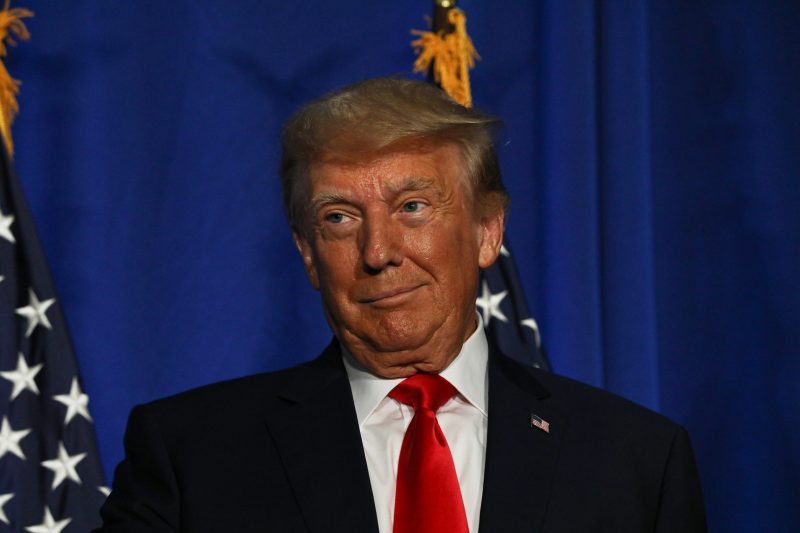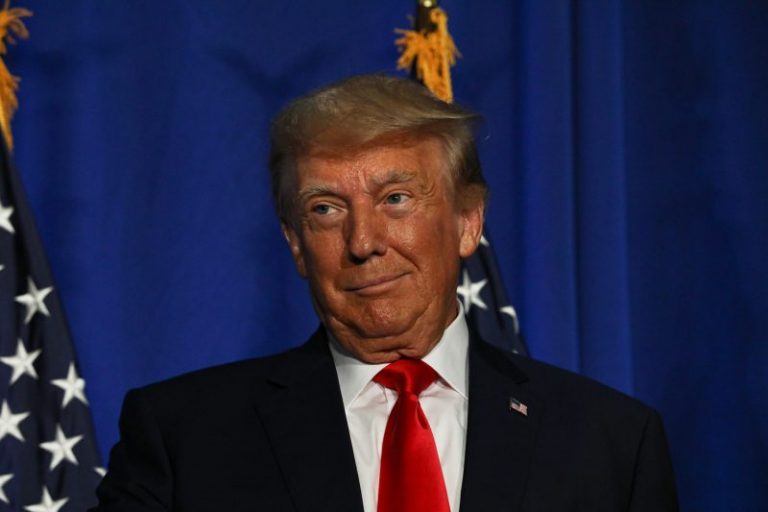
It was easy to brush off at first.
On May 31, CNN reported that federal prosecutors had obtained a recording of a conversation during which former president Donald Trump apparently showed someone a classified document. There had been rumblings about Trump sharing the classified documents in his possession with other people, prompting CNN’s Kaitlan Collins to ask Trump earlier that month if he’d shown documents marked as classified to anyone.
“Not really. I would have the right to,” Trump replied.
Collins asked what he meant by “not really.”
“Not — not that I can think of,” Trump said.
But now there was apparently a recording of his doing exactly that.
The first media personality to ask Trump about the May 31 report was his friend Sean Hannity.
“News broke yesterday that there might be a tape recording that, quote, ‘where you acknowledge that you understood that these were classified documents,’” Hannity said during a town hall on Fox News. “First of all, do you know who this call may be with? Do you know anything about it?”
Setting aside that CNN articulated clearly how the recording was made and where, Trump seized on Hannity’s escape hatch.
“No, I don’t know anything about it,” the former president replied. “All I know is this: Everything I did was right.”
Less than a week later, Trump was indicted and the charging document was made public. In it, the recording is quoted at length. The details of the initial CNN report were largely confirmed.
Much of the response in the moment centered on the indictment itself, for understandable reasons. Trump and his allies portrayed the entire thing as baseless and political, which was to be expected.
During an interview with Fox News’s Bret Baier, Trump was asked to explain the incident. After a bit of back-and-forth in which Trump tried to claim he was only saying he no longer had the power to declassify documents, he offered a new defense.
“There was no document. That was a massive amount of papers and everything else talking about Iran and other things,” Trump told Baier. “And it may have been held up or may not, but that was not a document. I didn’t have a document, per se. There was nothing to declassify. These were newspaper stories, magazine stories and articles.”
Then on Monday, CNN published the audio recording. The number of escape routes contracted dramatically.
Trump didn’t say he couldn’t declassify documents anymore; he said that he “could have declassified” the one at issue — indicating that it was still classified. The added information from the timing of the interactions, intonations and ambient sounds make very clear what was happening: Trump was showing something to the people with him, something he said was “secret information.”
Trump’s first response came on his bespoke social media site, where he claimed that the recording “is actually an exoneration, rather than what they would have you believe.” The lack of specificity on how it was exonerating is probably not a coincidence.
That was followed by several interviews in which Trump tried to wave the whole thing away.
He spoke to Fox News, where he offered a range of misdirections and denials.
“What did I say wrong with those recordings?” he said. “I didn’t even see the recording. All I know is I did nothing wrong. We had a lot of papers, a lot of papers stacked up. In fact, you could hear the rustle of the paper, and nobody said I did anything wrong other than the fake news, which, of course, is Fox, too.”
You’ll notice the internal contradiction here: he didn’t “see” the recording but is aware of the audible paper-rustling.
“I don’t do things wrong,” he added. “I do things right. I’m a legitimate person.”
At another point, he described the “papers stacked up” as “mostly newspaper articles, copies of magazines, copies of different plans, copies of stories, having to do with many, many subjects.”
In an interview with Semafor and ABC News, he was asked about those “plans” — given that the document at issue was purportedly one detailing plans for an attack on Iran.
“Did I use the word plans?” Trump said. “What I’m referring to is magazines, newspapers, plans of buildings. I had plans of buildings. You know, building plans? I had plans of a golf course.”
He also offered a different rationalization for the discussion.
“I would say it was bravado, if you want to know the truth, it was bravado,” Trump said. “I was talking and just holding up papers and talking about them, but I had no documents. I didn’t have any documents.”
If this seems scattershot, that’s because it is. Trump is not huddling with his legal team to figure out what lifeboat offers him the best chance of survival. He’s throwing everything at hand into the water in hopes that his supporters will find something to grab onto. The best legal strategy is for Trump to stay quiet. But Trump’s strategy for staying out of prison is heavily centered on winning the 2024 presidential contest, meaning that he needs to prioritize the loyalty of his political base. So he gives a dozen explanations for the recording, understanding that his allies only need to find one compelling in order to stick with him.
Eventually, this recording will play an important role in the criminal trial. Trump’s attorneys will be bound to reality and the government will present sworn testimony making explicit what actually happened during that discussion.
Until then, though, Trump will say whatever he thinks is most useful in the moment for retaining his political popularity.


Comments are closed.